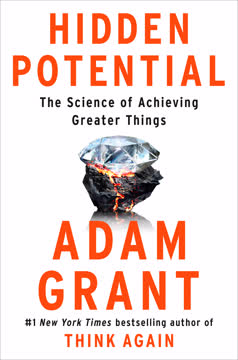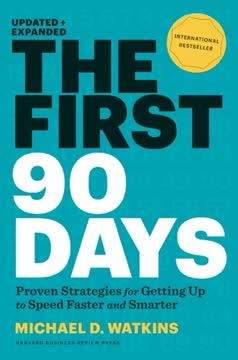Key Takeaways
1. Agility is Essential for Survival and Success in a VUCA World
The Agility Shift is the intentional development of the competence, capacity, and confidence to learn, adapt, and innovate in changing contexts for sustainable success.
Today's reality is VUCA. The business environment is increasingly volatile, uncertain, complex, and ambiguous (VUCA). Unexpected events, rapid technological shifts, and evolving markets demand a fundamental change in how individuals, teams, and organizations operate. Relying solely on traditional planning and control methods is no longer sufficient; the ability to respond effectively to the unplanned is paramount.
Agility is the competitive edge. Research shows agile firms grow revenue significantly faster and generate higher profits than their less agile counterparts. Beyond financial benefits, agility fosters engagement, meaning, and purpose, which are crucial for sustained performance. It's not just about reacting to threats but proactively finding opportunities in change.
The Agility Shift is dynamic. It involves a continuous shift in mindset, strategy, and daily practices. This includes moving from rigid planning to continuous preparation, from viewing work as discrete events to ongoing processes, and crucially, from an over-reliance on information to prioritizing dynamic interactions within a network of relationships and resources.
2. The Relational Web is the Core Foundation of Agility
The Relational Web is the personal and system-wide network for mutual support, coordination, and resource and idea sharing.
Relationships enable agility. When faced with the unexpected, our first instinct is often to turn to our network of relationships. This "Relational Web" provides essential support for sense-making (understanding what's happening) and meaning-making (discerning significance), which are critical for effective action, even under pressure.
More than just social ties. The Relational Web includes active and inactive relationships with people, past experiences, skills, knowledge, and tangible/intangible resources. Like a spiderweb, it's incredibly strong and resilient, able to soften and stretch under stress before stiffening for reinforcement.
Wired for connection. Neuroscience confirms our brains are fundamentally social organs, wired for connection and relationship building. Social interaction releases oxytocin, which moderates stress hormones, allowing for clearer thinking and greater access to the prefrontal cortex – the seat of executive function and creativity. A strong Relational Web enhances our ability to cope with stress and boosts creativity.
3. Master the Five Dynamic Qualities of Agile Organizations
The most effective and agile leaders, teams, and organizations do more than weave a strong Relational Web.
Agility has five key dynamics. Beyond building a strong Relational Web, agile entities embody five interconnected qualities: Relevant, Responsive, Resilient, Resourceful, and Reflective. These aren't static traits but dynamic capacities developed through intentional practice.
The Five Dynamics:
- Relevant: Awareness and alignment of values/purpose with organizational success, guiding action.
- Responsive: Ability to react quickly and effectively to the unexpected and opportunities, being "response-able."
- Resilient: Capacity to regroup, reorganize, and renew in response to disruption, often transforming rather than just bouncing back.
- Resourceful: Awareness and creative use of all available resources (human, technical, environmental), improvising within "givens."
- Reflective: Learning from experience through continuous reflection-in-action and on-action, driven by curiosity.
Interconnected and mutually reinforcing. These dynamics work together. Relevance guides responsiveness, resourcefulness supports resilience, and reflection fuels continuous improvement across all areas. Developing one dynamic often enhances the others, creating a powerful cycle of agile capability.
4. Agility Requires Leadership and Followership at Every Level
When it comes to agility, a leader is anyone who sees an opportunity or challenge and takes responsibility for doing something about it.
Leadership is action, not title. In a VUCA world, waiting for formal leaders to act is too slow. Agility demands that everyone feels empowered and takes responsibility for responding to challenges and opportunities within their sphere of influence. This is leadership of self and others, focusing on the power to act.
Embrace followership. Knowing when to step back and support others who are leading in the moment is crucial. Like a jazz ensemble, agile individuals fluidly shift between leading and supporting roles based on the needs of the situation, keeping the collective rhythm.
Whole-person agility matters. Our ability to lead effectively under stress is tied to our brain and body. Understanding how the brain reacts to uncertainty (survival mode, fight/flight) and practicing presence, cognitive reappraisal ("worrier to warrior"), and embodied awareness helps us access higher-level thinking when needed. Learning agility – the ability to learn from experience and apply it in new contexts – is the most important leadership competence.
5. Build Agile Teams by Embracing Improvisation and Collaboration
If the future is uncertain, best learn to improvise.
Teams are like improv troupes. Agile teams don't rely on rigid scripts or playbooks. Like improvisers, they work without a predetermined plan, thinking on their feet and adapting as the "scene" unfolds. They operate with a few agreed-upon "givens" and build collaboratively in the dynamic present.
Key improv principles for teams:
- Identify and Agree on Givens: Establish shared understanding of constraints and starting points.
- Agree to Agree: Accept contributions from teammates and build upon them ("Yes, and...").
- Practice Gift Giving: Generously offer ideas and support, setting others up for success.
- Find the Game: Identify emerging patterns and themes in interactions and amplify them.
Lessons from high-stakes teams. SWAT teams, film crews, and flight crews demonstrate agile team dynamics under pressure: continuous learning, fluid communication, context creation, role elasticity (willingness to shift roles), and resource awareness. Agile development teams apply similar principles, moving from "waterfall" to rapid "sprints," command-and-control to self-organization, and false security to "anxious confidence."
6. Structure Your Organization for Dynamic Interaction, Not Static Control
Agile leaders are shifting from thinking of their organization as a mechanistic system of efficient parts to a dynamic system of human interaction.
Organizations are living systems. Instead of viewing organizations as rigid machines, see them as dynamic systems of human interaction, constantly "organizing" through relationships and communication. The goal is to design structures that support these interactions, not impede them.
Weave the organizational web. Organizational agility depends on a healthy Relational Web that spans formal and informal ties across departments, levels, and locations. Strong ties build trust and increase response time, while diverse networks improve knowledge transfer and innovation. Identify and bridge "bare spots" or structural holes in your network.
Balance formality and fluidity. While some formal structure is needed for identity and routine operations, too much can stifle adaptability and engagement. Agile organizations find a dynamic middle ground, flattening hierarchies where possible and prioritizing systems and processes that enable seamless collaboration, communication, coordination, and rapid decision-making.
7. Maximizing Agility by Actively Engaging Your Business Ecosystem
Business ecosystems condense out of the original swirl of capital, customer interest, and talent generated by a new innovation, just as successful species spring from the natural resources of sunlight, water, and soil nutrients.
Agility extends beyond the organization. No organization exists in isolation. It's part of a larger ecosystem including customers, suppliers, competitors, communities, educational institutions, and the environment. Engaging with this ecosystem is crucial for sustained agility and innovation.
Value of a healthy ecosystem. A thriving ecosystem fosters innovation through cross-pollination of ideas and talent (e.g., open innovation, incubation centers). It also provides a more resilient environment, offering resources and support when unexpected challenges arise (e.g., collaborative disaster response).
Become an active participant. Map your ecosystem to understand its inhabitants and the nature of relationships. Intentionally weave interorganizational webs by initiating idea/resource sharing and making it easy for others to connect with you. Support centers of learning and innovation that nourish the entire system.
8. Shift Learning and Development to Cultivate Agile Performance
Learning agility is the most important leadership competence for success in changing contexts.
Learning for agility. The purpose of learning shifts from just acquiring skills/knowledge to expanding the Relational Web and enhancing effectiveness in changing conditions. This requires valuing different types of knowledge: relational, embodied, reflective, and contextual, which are gained through direct experience.
From competence to performance. Agility isn't just about having competence; it's about performance – applying competence with capacity and confidence in action. Learning strategies must focus on developing this ability to perform effectively in unpredictable situations.
Agile learning strategies:
- Seek "stretch" experiences that push you out of your comfort zone.
- Cross-train in different roles to become a "generalizing specialist."
- Make the most of formal training by setting goals and reflecting on application.
- Prototype new learning strategies rapidly ("SAM" model).
- Create whole-person learning experiences (embodied, emotional, complex).
- Use improv coaching and regular "workouts" to practice skills.
- Provide timely, actionable feedback (social, conversational).
- Employ action learning by integrating learning into collaborative projects.
- Create learning networks and communities of practice.
9. Recruit, Reinforce, Recognize, and Retain Agile Talent
Agile performers stay with agile organizations.
Attract the right mindset. Recruiting for agility means looking beyond technical skills for candidates who are curious, collaborative, problem-solvers, emotionally hardy, and possess emergent leadership skills. Leverage your Relational Web and social media to find these individuals.
Assess agility in action. Go beyond traditional interviews. Observe candidates' interactions, conduct collaborative inquiries into past agile behaviors, and use "agility auditions" or playful prototyping exercises to see how they perform under pressure and collaborate with your team.
Reinforce and recognize continuously. Move away from infrequent formal evaluations towards continuous, social, and conversational feedback. Use positive reinforcement to highlight desired agile behaviors and attitudes as they happen. Recognize progress on meaningful work and celebrate small wins to boost engagement.
Retain agile talent by keeping the promise. Agile individuals thrive in environments that offer relevant work, responsiveness, resilience, resourcefulness, and reflection. Set them up for success by providing playspace, resources, and trust. Foster a coaching culture where everyone supports one another's development and performance.
Last updated:
Review Summary
Agility Shift receives mixed reviews, with an average rating of 3.29/5. Readers appreciate its introduction to agile concepts and emphasis on mindset change. Positive reviews highlight the book's insights on relational webs, continuous learning, and adaptability. Critics find it too broad, jargon-heavy, and lacking in practical examples. Some readers value its neuroscientific approach and ideas for team dynamics. Overall, it's recommended for those new to agility but may not offer much new information for experienced practitioners.
Similar Books
Download PDF
Download EPUB
.epub digital book format is ideal for reading ebooks on phones, tablets, and e-readers.








